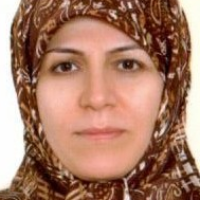Study the relationship between space and gender justice; Case Study: Region 6 of Tehrn
City as a geographic ecosystem is composed of different artificial (framework) and natural (humans) elements and parts. Dynamics and vitality of such ecosystem emanates from relationships between its interconnected elements and components. On the other hand, the urban space is the host of humans, and also is the arena of political, economic, cultural, social decision-making, and in such an active cycle it is constantly produced and represented. It is interesting that the impact of gender effectiveness of urban settlers is different in this geographic ecosystem. Such different and unequal gender role playing is considered as a problem in this research by the case study in one of the Tehran districts. The research methodology is descriptive-analytic and analyzed the gender position in construction of urban space as well as factors affecting on it by using the library information, observation, interview as well as questionnaire. The research findings show that (feel of) security, access to municipal facilities and civic participation of women is significantly less than men. This situation has reduced citizenship satisfaction and communication of citizens. Graffiti, advertising, sculptures, signs and symbols in the 6th district of Tehran as indicators to measure the landscape, represents gender space and lack of gender justice in it. The effectiveness of all the above factors is visible in urban landscape and in urban public spaces, particularly. According to the research finding, Ideology and culture are two important factors in gender space. The former is more representation in public and semipublic spaces than second. So people as space users are faced by limitation. In other world, culture as collective behavior is less visible in such a district areas. Restrictions that have been imposed on such an urban district by institutions of urban administration are including social segregation based on gender and spatial segregation. Finally, city were unoccupied of the people’ social communication (especially women who need to be define their social identity) and have a negative effect on their social interaction.
space , gender justice , Tehran , ideology , culture
- حق عضویت دریافتی صرف حمایت از نشریات عضو و نگهداری، تکمیل و توسعه مگیران میشود.
- پرداخت حق اشتراک و دانلود مقالات اجازه بازنشر آن در سایر رسانههای چاپی و دیجیتال را به کاربر نمیدهد.




